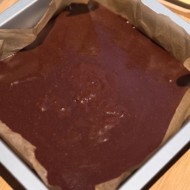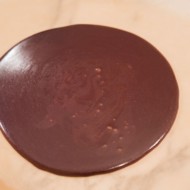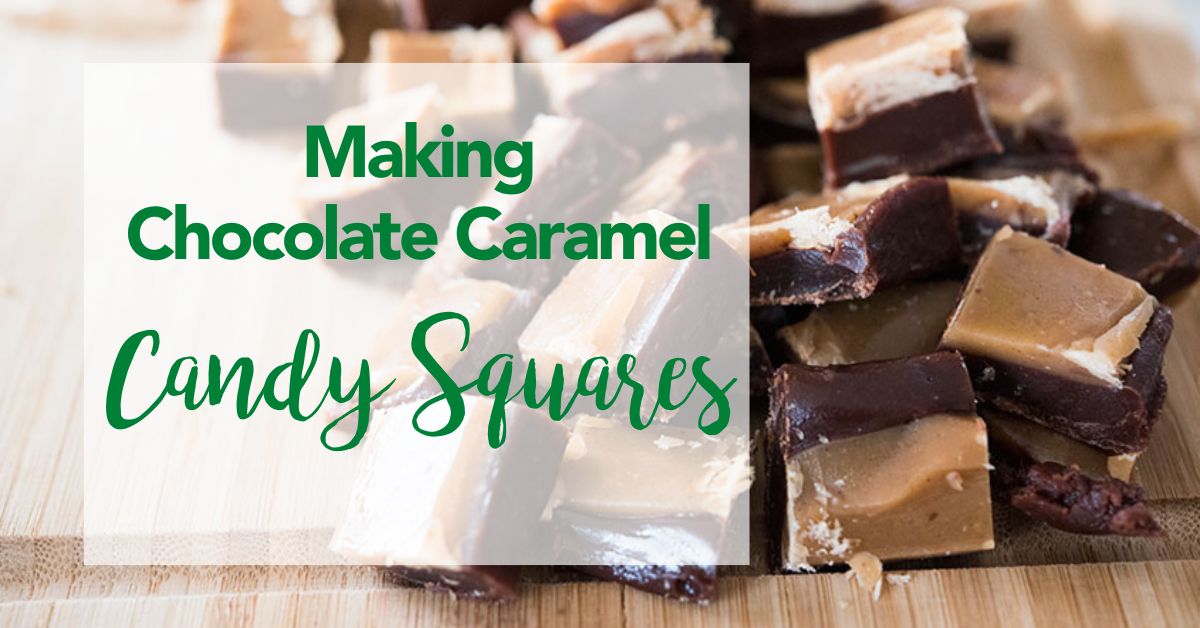
Sweet, Like Chocolate Caramel Candy Squares
Candy confection is not for the faint of heart, but believe me, if you are up for the challenge, your loved ones will thank you. Besides, they won’t dare tell you it’s not good. 😉
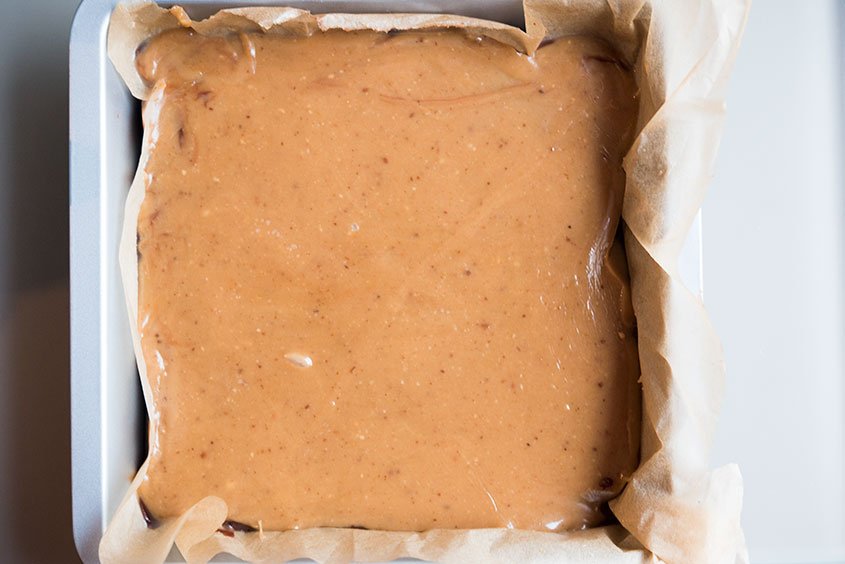
I felt like a real chemist testing this recipe for you and learned quite a bit in the process. While I have tried my hand at chocolate making with some mixed results, I have never made hard or semi-hard candies before. One thing I can tell you for sure is that you need to be prepared. Make sure you have a candy thermometer. Like with when you make Italian Meringue for macarons, you are better off with the right tools if you don’t want to be doomed to failure. Be sure that you have stainless steel pots (more than one) or copper-bottomed pots. Have a scale (including a letter scale for really small weights, like for the pectin). And most of all, it’s crucial to be precise, but relax, because it is so easy to make a mistake – especially if you start to panic.

Now, what’s so special about candy? Why sugar of course! Let’s talk about sugar, baby. Sugar gets a pretty bad rap but all plants contain sugar and the brain needs sugar (in the form of glucose). But as they say, can’t have too much of a good thing. To see the real-time effects of sugar on the brain, just give some sweets to a room of 4-year-olds and “Bonjour!” or bad day depending on exactly how much excitement you like in your life.
We obtain sugar by extracting it from plants, we get glucose syrup through the process of hydrolysis – taking the starch from our sugar source (the plant), which is made up of glucose units, which are then broken in different places. Glucose syrup composition depends on hydrolysis intensity and nature. In candy-making, glucose syrups have anti-crystallizing and stabilizing powers and increase softness. It’s all chemistry. Learned these sugar tidbits on a visit to the Haribo museum in Uzès.
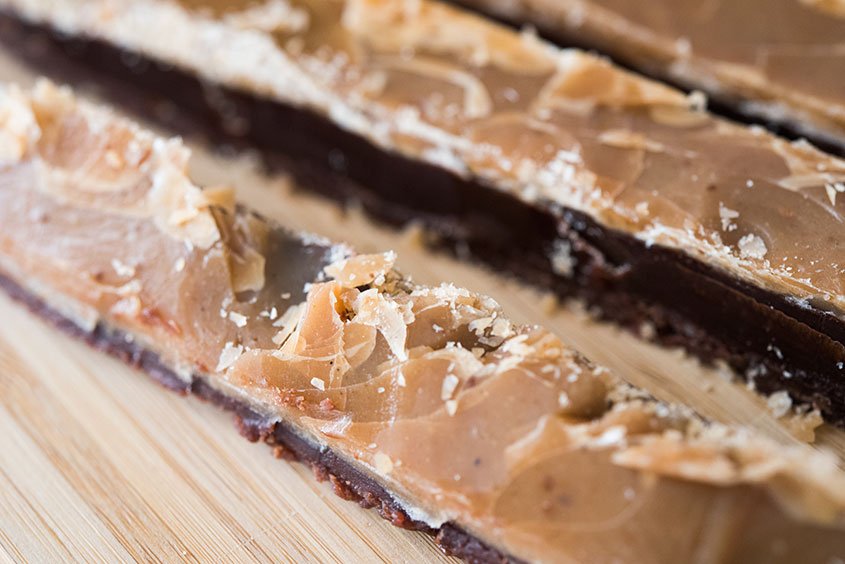
Candy-making is not for the faint of heart. But we had to include a more challenging Christmas gift option to spice things up a bit. What fun is all this easy stuff when you can burn your fingers . . . I mean whip up some lovely sugary treats for your friends.
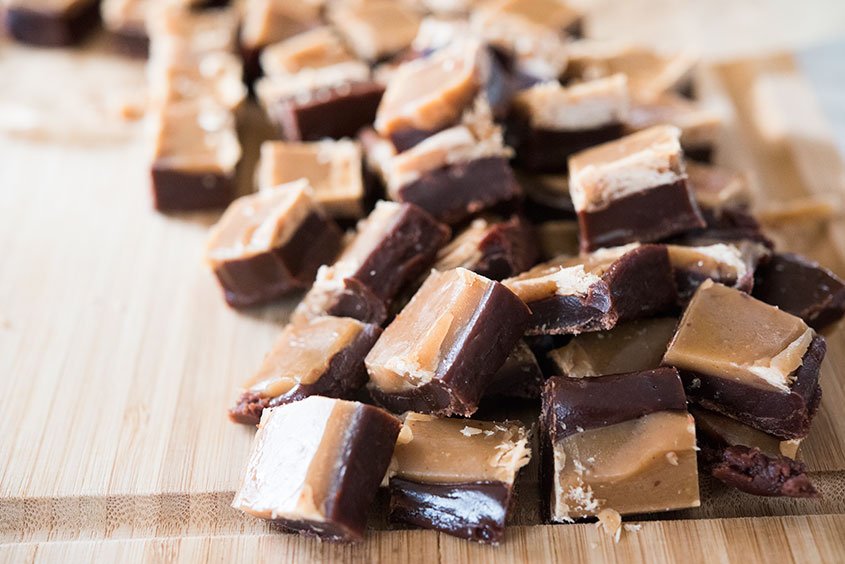
Allow me to furnish you future confectioners a sugar cooking cheat sheet that I picked up at the museum. You can obtain 11 different results with sugar ranging from syrup to caramel with very subtle temperature changes. You really can see these changes occurring as the temperature rises. It requires a little patience depending on your heat source and you need to be quick with the results or end up having all your efforts wasted because it hardens too quickly.
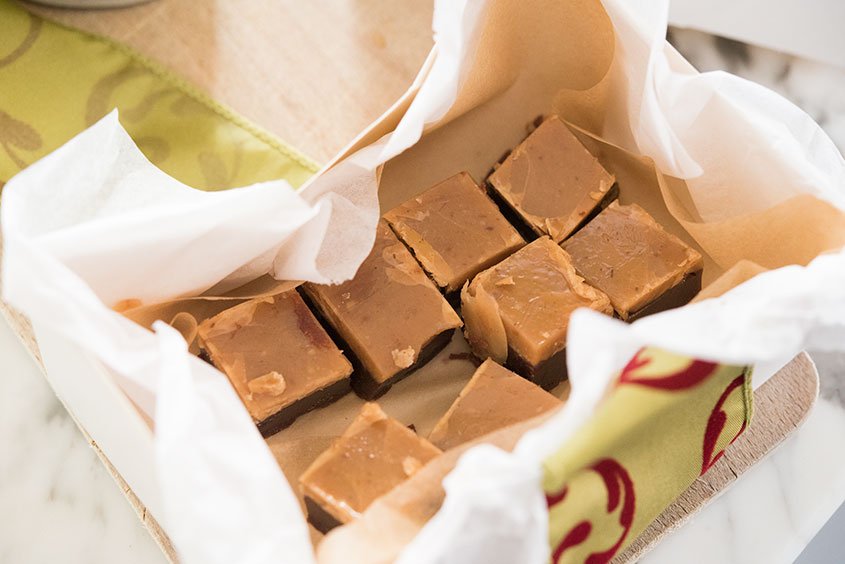
What you will need:
- A reliable candy thermometer.
- Double-bottomed copper or stainless steel containers
- Moderate, steady & uniform heat source
- Sugar
- Water
- A few drops of lemon or white vinegar (we did not use any in this recipe, however)
- And careful vigilance
All temperatures are in degrees Celsius (you can find a chart with degrees Fahrenheit here and some slightly different temps in Celsius).
105ºC Coating: The syrup starts to boil and becomes transparent. It spreads to coat the skimmer when you dip it. Used for: Rum babas and savarins.
107ºC Thin thread: Dip two fingers in cold water, then in the syrup. When you open your fingers, the syrup forms a fragile thread, 2 to 3 mm long. Used for marzipan.
109ºC Chunky thread: The thread measures 5 mm long and is less fragile. Used for: buttercream
111ºC Beading: Large round beads form on the surface of the syrup. The thread solidifies when you open your fingers. Used for: turon, candied pineapple.
114ºC Bubble: If you dip the skimmer in the skimmer in the syrup then blow on it, you will see solid bibles forming. The thread can hold for up to 2 cm between your fingers. Used for: icing, candied fruit.
115º-117ºC Soft ball: Use a spoon to pour a little syrup into a bowl of cold water. It forms a soft, pliable ball. Used for: jam, crème brûlée
125º-130ºC Firm ball: The ball firms up. Used for: fondant, nougat, Italian meringue, almond praline
135º-140ºC Soft crack: The ball hardens and turns sticky. Used for: barley sugar candy
145º-150ºC Hard crack: The ball is hard and brittle, not sticky, yet remains translucent. Used for: Lollipops, boiled sweets, hard caramels, icing for marzipan fruit
155º-165ºC Light caramel: The sugar starts to turn yellow. Used for: nougatine, cream caramel, upside-down apple pudding
165ºC-175ºC Dark caramel: The sugar darkens. Used for: flavorings and caramel coloring.
Now that we have the scientific part covered, let’s make some candy!
Chocolate Caramel Candy Squares
Ingredients
CHOCOLATE CANDY BASE
- CHOCOLATE CANDY BASE
- 50 Grams Cocoa Nibs 0.5 cup
- 20 Grams Glucose 1.5 tbsp
- 60 Grams Butter 0.25 cup
- 100 Grams Sugar 0.5 cup
- 1 Gram Pectin 0.2 tsp
- 25 Milliliters Water 0.85 floz
CARAMEL CHOCOLATE LAYER
- 170 Grams Heavy Cream (30-35%) 6 oz
- 100 Grams Glucose 3.5 oz
- 15 Grams Butter 0.5 oz
- 100 Grams Sugar 3.5 oz
- 100 Grams Dark Chocolate (70%) 3.5 oz
CARAMEL VANILLA LAYER
- 90 Milliliters Water 3 floz
- 2 Grams Salt 0.07 oz
- 75 Grams Sugar 2.7 oz
- 140 Milliliters Heavy Cream (30-35%) 4.7 floz
- 105 Grams Glucose 3.7 oz
- 1 Vanilla Bean
- 17 Grams Butter 0.6 oz
Instructions
For the Chocolate Candy Base:
- Finely chop the Cocoa Nibs in a food processor or by hand.
- Melt the butter with the glucose. Then add the sugar and pectin. Add the water and bring it to a boil.
- Add the cocoa nibs and mix well. Let cool down slightly before pouring it onto your prepared slightly oiled parchment paper. Letting it cool down a bit will make it easier to manipulate – it should be almost a paste.
- Place a second oiled sheet of parchment paper on top and roll out to about 2 cm thickness.
- Cut the candy base and its parchment paper covers to the size of your mold. We used an 18cm x 18cm mold (about 7” x 7”). Place your cut candy base into the mold and set aside.
For the Caramel Chocolate layer:
- Bring to a boil the cream, glucose, butter, and sugar.
- Add the chocolate and whisk while cooking to the exact temperature of 115°C (239°F).
- Pour in the mold directly, because it starts to harden quickly. Spread out as best as you can so you have an even layer.
For the Caramel Vanilla layer:
- Bring all the ingredients except the butter to a boil. Cook to 125°C /257°F then add the butter off the heat.
- Pour the chocolate into the mold right away.
- Let it sit outside overnight.
Finishing
- If desired, you can put the candy in the freezer so that it will be easier to cut – bear in mind that your top layer is likely to crack slightly when cut. Then cut into cubes and enjoy.
- Best to store in a cool place (between 12-19ºC (53.6ºF-66.2ºF) or stick it in the freezer and bring it back to room temp when ready to consume or eat frozen.
Did you try this recipe? Let us know in the comments.
These candy squares make a great gift for the holiday season and one that can be much appreciated by your sweet toothed friends!
And what if you gave the gift of French cooking? Gift vouchers are now available for our ONLINE cooking classes and courses. Grab your vouchers here!

